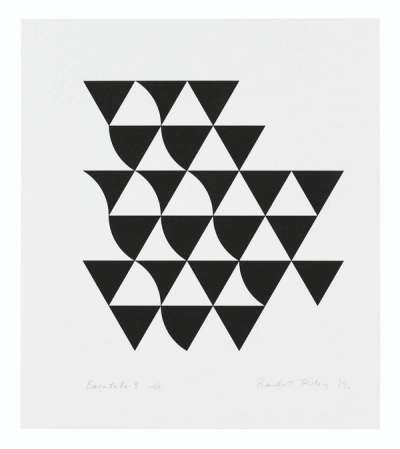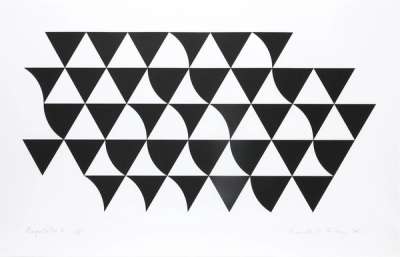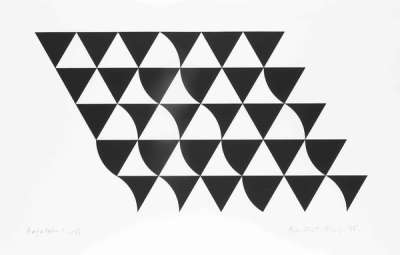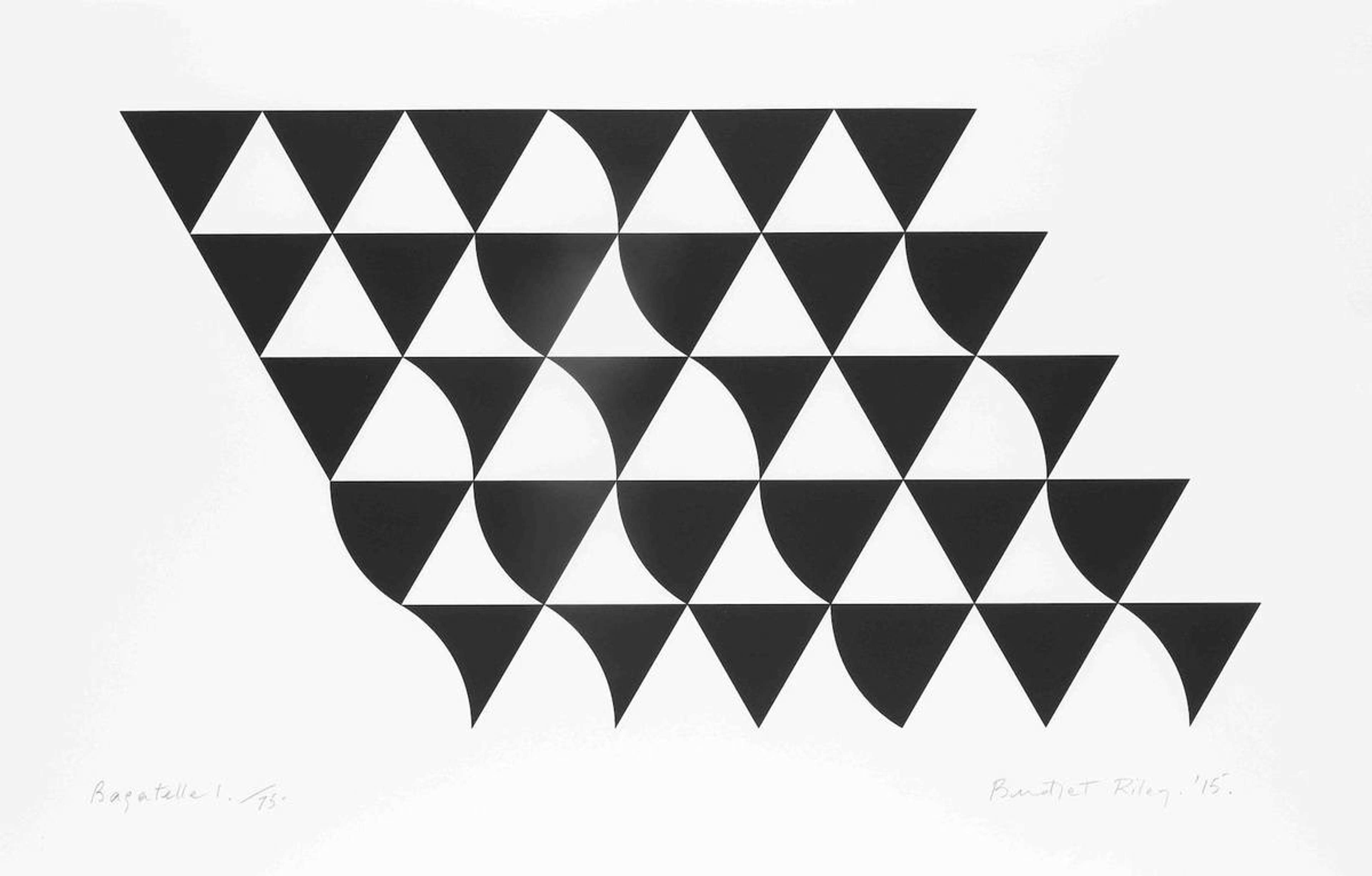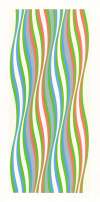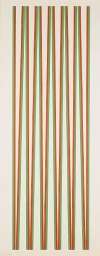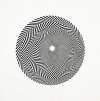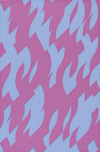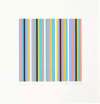Bagatelle
Disorientating and stimulating, Bridget Riley’s 2015 Bagatelle series is typical of the Op Artist’s oeuvre. In these three monochrome prints, Riley captures a pattern of triangles, some with straight edges and others curving in different directions. Riley disrupts geometric order in this series, and encapsulates a sense of movement that has led critics to label her work as “kinetic”.
Bridget Riley Bagatelle For sale
Bagatelle Value (5 Years)
Bridget Riley's Bagatelle series has historically shown more modest results compared with the artist’s wider oeuvre, with auction prices ranging from £1575 to £9000. Average annual growth has remained modest at -14.56%, with certain works seeing declines in value. Over 18 total auction appearances, average selling prices have held steady around £6599. This series appeals to collectors seeking accessible entry points into Bridget Riley’s print market.
Bagatelle Market value
Auction Results
| Artwork | Auction Date | Auction House | Return to Seller | Hammer Price | Buyer Paid |
|---|---|---|---|---|---|
 Bagatelle 1 Bridget Riley Signed Print | 25 Nov 2025 | Rosebery's Fine Art Auctioneers | £11,900 | £14,000 | £18,000 |
 Bagatelle 2 Bridget Riley Signed Print | 25 Nov 2025 | Rosebery's Fine Art Auctioneers | £9,350 | £11,000 | £14,500 |
 Bagatelle 3 Bridget Riley Signed Print | 1 Apr 2025 | Christie's London | £7,225 | £8,500 | £11,500 |
Sell Your Art
with Us
with Us
Join Our Network of Collectors. Buy, Sell and Track Demand
Meaning & Analysis
Bagatelle is a series of monochromatic screen prints, created by Op Art pioneer and a leading figure in British abstract painting, Bridget Riley. Visually, this series relates to many concerns of the period in which Riley came of age: challenging the mind-body duality leading Aldous Huxley to experiment with hallucinogenic drugs; fears regarding the loss of genuine individual experience; concerns about the future and threat of nuclear war amidst the Cold War; and a perceived need for audience participation.
Exemplary of Riley’s non-representational approach to painting, motivated by the work of the Italian Futurists, the Bagatelle series depicts hard-edged forms rendered in Riley’s distinct monochrome. The shapes subtly move and shift as the viewer’s eyes skirt across, referencing the erratic, user-generated motions of the French billiards game, bagatelle.
The paintings of Victor Varsarley were of great influence to Riley, who had used designs of black and white lines since the 1930s. Riley’s childhood spent in Cornwall, escaping war-torn London, also had an impact on her work. Riley confesses that the ever-changing Cornish seas and skies stimulated her vision. In this sense, her optically stimulating works can be read as an attempt to recreate the wonder of seeing, which could not be effectively captured by a representational image.
Exploring the interplay of shape, line and light, Riley embraced abstraction as a conduit to discover meaning in her work. Whilst undertaking a part-time teaching post at Hornsey College of Art from 1960-61 Riley began her first Op Art paintings. Working in simple geometrical forms, Riley confesses: “I started studying squares, rectangles, triangles and the sensations they gave rise to. […] The marks on the canvas are the sole and essential agents in a series of relationships which form the structure of painting” – Bridget Riley. Impersonal, and obviously unrelated to the world, Op Art is based on geometric abstraction. However, there is still meaning embedded within this: the work is never intended to be an end in itself, but a medium through which each viewer has a subjective experience, influenced by their own understandings.
